The cushion cut has a square or rectangular shape with rounded corners, resembling a pillow. They are a great, cost-effective alternative to Round diamonds, as they are similar in appearance and almost as brilliant.
As one of the oldest diamond shapes, the cushion cut has evolved a lot over the years. The two main categories of cushion diamonds that are on the market today are the modern Cushion Modified Brilliant, and the more traditional Antique Cushion Cuts.
Among the Cushion Modified Brilliants are two main subcategories – Crushed Ice and X-Factor. Which one you choose for your 8 carat diamond ring is really down to personal preference, and it’s a good idea to view a selection of diamonds to see what you like best.
Crushed ice cushion cut diamonds
This is the most popular variation of the modern cushion cut, and makes up about 98% of all cushions on the market. This variation is so prominent because it produces the least amount of lost carat weight during the cutting process.
X-Factor cushion cut diamonds
When viewed face up, these diamonds appear to have an “X” through their center. They differ from Crushed Ice cushions in the length of their 4 primary pavilion facets; in X-factor cushions, these facets are longer, which creates the X shape and also contributes to added brilliance. More carat weight is lost when cutting X-factor cushions, but what many lack in carat, they make up for in the intensity of their brilliance. Since they are more rare and more brilliant than Crushed Ice cushions, they are generally more expensive.
Antique cushion cut diamonds
Antique Cushions display a uniformity of white light in their brilliance. They are unique, rare, and very brilliant. Because they have the highest carat weight loss in their cutting process of all the cushion shapes, this variation is not the most cost-effective. However, if you are looking for most intense brilliance in your cushion cut diamond, this would be your best choice.
8 carat cushion cut diamond cut quality guide
IDEAL | EXCELLENT | VERY GOOD | GOOD | FAIR | POOR | |
|---|---|---|---|---|---|---|
| TABLE % | 59 – 63 | 61 – 67 | 58 – 60 or 68 – 70 | 56 – 57 or 71 | 54 – 55 or 72 – 73 | < 54 or > 73 |
| DEPTH % | 64 – 69 | 61 – 67 | 58 – 60.9 or 67.1 – 70 | 56 – 57.9 or 70.1 – 71 | 54 – 55.9 or 71.1 – 73 | < 54 or > 73 |
| GIRDLE | Very Thin | Very Thin – Slightly Thick | Very Thin to Thick | Very Thin to Very Thick | Extra Thin to Extra Thick | |
| CULET | None | Very Small | Small | Medium | > Medium |
Cushion cut diamond length-to-width guide
| EXCELLENT | VERY GOOD | GOOD | FAIR | POOR | |
|---|---|---|---|---|---|
| SQUARE | 1.00 – 1.03 | 1.04 – 1.05 | 1.06 – 1.08 | > 1.08 | |
| RECTANGLE | 1.15 – 1.20 | 1.10 – 1.14 or 1.21 – 1.30 | 1.10 – 1.14 or 1.21 – 1.30 | 1.08 – 1.09 or 1.31 – 1.50 | < 1.08 or > 1.50 |
ASET & IDEALSCOPE
Both ASET and Idealscope images can help you to better evaluate the light performance of your diamond. Both tools will reveal areas of light leakage in white, but an ASET reading contains more detailed information.
Because of this, it is the preferred method for evaluating fancy cut diamonds like the cushion cut. However, because of the idealscope’s simplicity, it is a more user-friendly tool for non-gemologists. All you need to know when reading an idealscope is that white areas represent light leakage (bad) and red areas indicate light return (good).
Check out these images below for examples of ASET and Idealscope readings for cushion diamonds.


